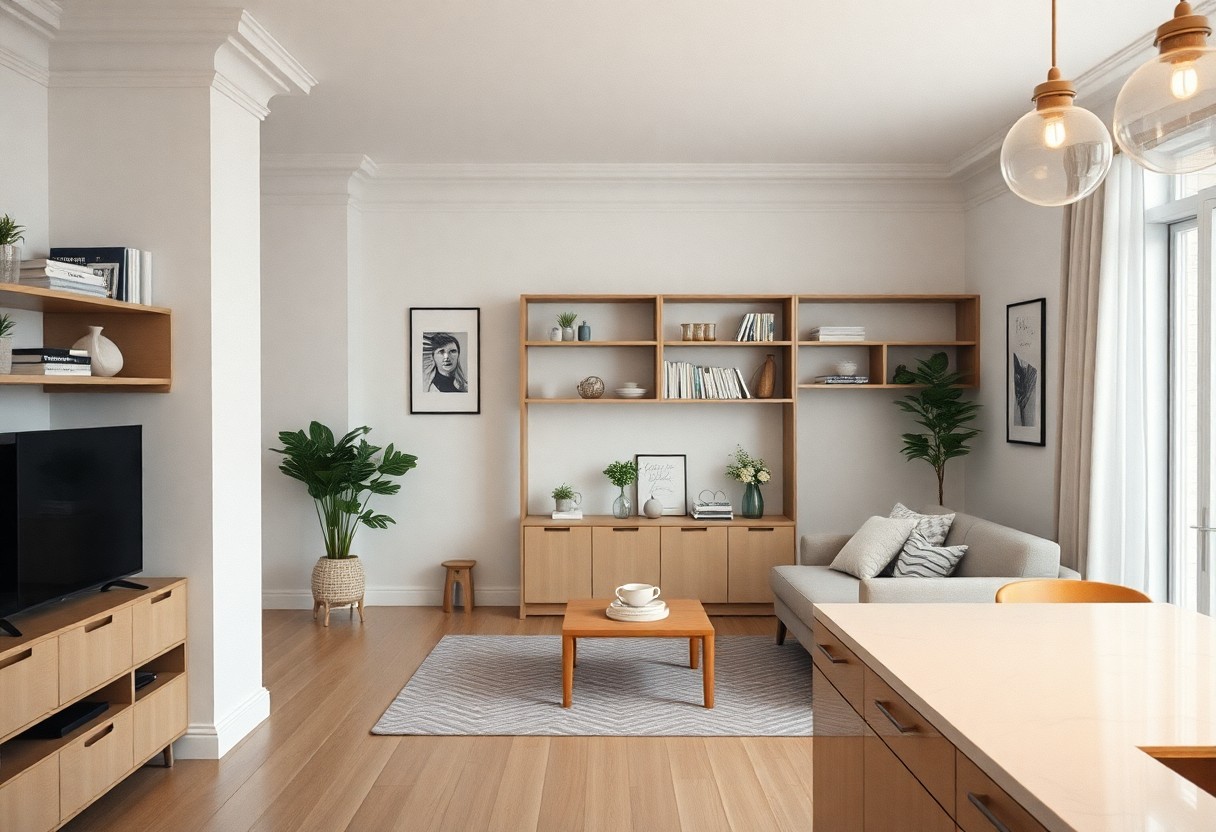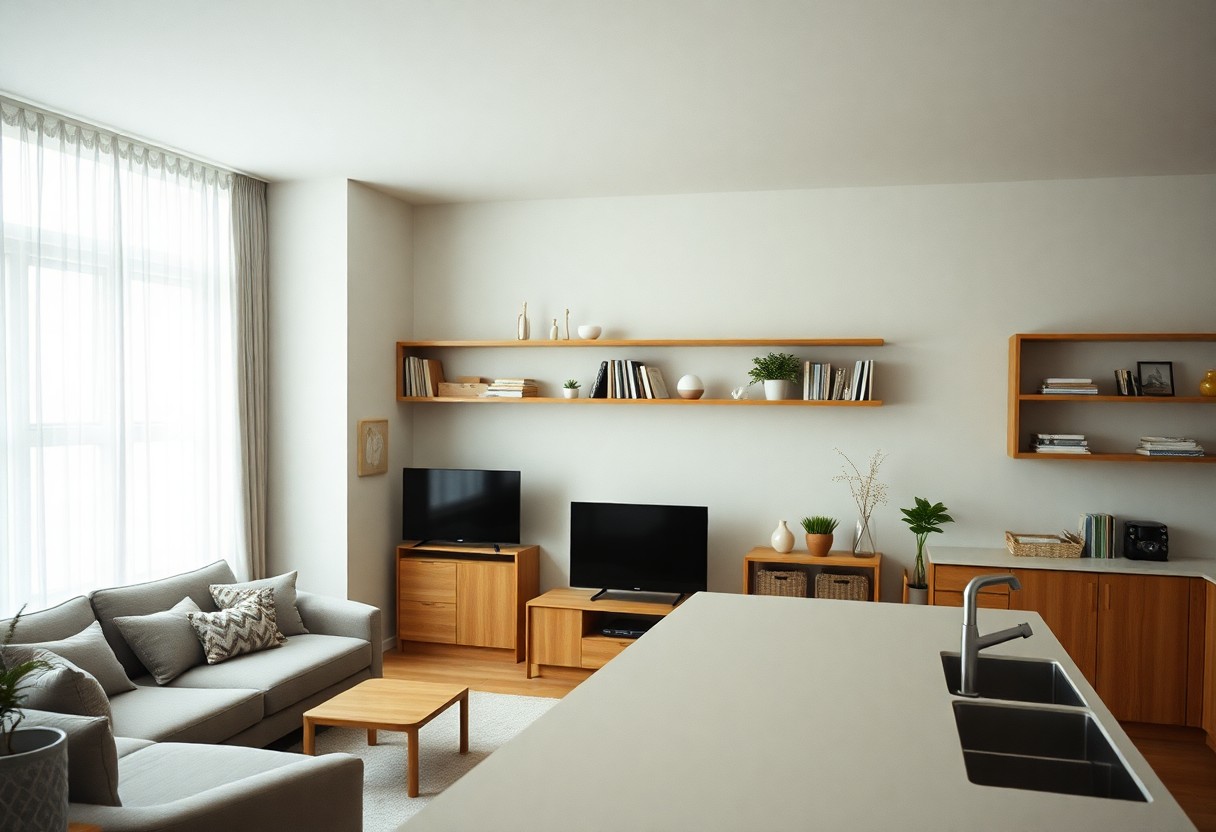You want your home to attract potential buyers, and decluttering and depersonalizing is the key to achieving that fast sale. By removing your personal items and excess clutter, you’ll create an inviting atmosphere that allows buyers to envision themselves living in your space. This simple process not only enhances your home’s appeal but also helps you maintain a sense of control during the selling journey. In this post, we’ll explore effective strategies to streamline your home, making it irresistible to prospective buyers.
Key Takeaways:
- Begin by tackling one room at a time to avoid feeling overwhelmed and to maintain a clear focus.
- Remove personal items such as family photos and personalized decorations to create a neutral environment appealing to potential buyers.
- Minimize furniture and belongings to enhance the visual space and allow buyers to envision their own items in the home.
- Organize closets and storage areas, as buyers often check these spaces to gauge storage capacity.
- Make use of creative storage solutions, such as bins or baskets, for items you choose to keep while still decluttering visible spaces.
- Cleaning and making minor repairs can significantly improve a home’s overall appeal and can lead to a quicker sale.
- Consider the importance of curb appeal by tidying up the exterior and landscaping to create a good first impression.
Understanding the Importance of Decluttering
To facilitate a quick home sale, decluttering is vital to creating a welcoming environment for potential buyers. By removing excess items, you allow your home’s features to shine through and make it easier for prospects to envision their lives in the space. For more insights, check out How to Depersonalize Your Home to Sell.
How to Assess Your Space
Your first step in the decluttering process is to assess your space carefully. Take a walk through each room and identify areas that feel crowded or cluttered. Consider what items contribute to the overall appeal of your home and what might hinder it.
Tips for Prioritizing What to Keep
There’s a strategy to deciding what stays and what goes. Start by evaluating items in terms of their importance and functionality:
- Sentimental value – Keep only what truly matters.
- Functionality – Retain items you use regularly.
- Aesthetics – Choose pieces that enhance your home’s visual appeal.
The key is to strike the right balance between minimalism and personal touch.
It’s important to categorize all belongings in your home to make decluttering more manageable. Consider creating three groups: keep, donate, and discard. This method helps streamline the process and ensures you are prioritizing effectively:
- Keep – Items you will use or display.
- Donate – Items in good condition you no longer need.
- Discard – Damaged or unusable items.
The goal is to create a space that feels open and inviting.
1. Start with a thorough inventory of all items.
2. Remove personal photographs and sentimental objects completely.
3. Clear surfaces; keep only vital decorative pieces.
4. Organize closets; maximize space and minimize items visible.
5. Deep clean every room for a fresh, inviting look.
6. Consider neutral paint colors for a broader appeal.
Effective Decluttering Strategies
You can streamline the selling process by implementing effective decluttering strategies. Start by setting a timeline and committing to a schedule that allows you to focus on each area of your home. Gather necessary supplies such as boxes, bags, and labels to easily sort items. Embrace a minimalistic approach by assessing the items you truly need versus what can be discarded or donated. This not only improves your space but also enhances its appeal to potential buyers.
Room-by-Room Decluttering Guide
While decluttering can feel overwhelming, breaking it down room by room makes the task manageable. Start in the most cluttered area or one with the highest foot traffic, such as the living room or kitchen. As you progress, focus on one category at a time, whether it’s clothing, paperwork, or kitchen gadgets, ensuring you give each space the attention it deserves.
How to Make Quick Decisions on Items
Decisions about what to keep and what to let go of can be daunting. To simplify this process, ask yourself a few key questions: Have I used this in the past year? Does this item serve a purpose? Does it evoke positive feelings or memories? If you hesitate for too long, it’s usually a sign the item isn’t crucial.
Plus, establishing a 30-second rule may help to speed up your decision-making process. If you can’t determine the value of an item in half a minute, it’s likely that it’s not important to you. Consider creating three piles: keep, donate, and trash. The more decisive you are, the cleaner your space will become, allowing prospective buyers to envision their own lives in your home.
Depersonalizing Your Home
Not all potential buyers can envision your home as their own. To Depersonalize your Home – Take the home out of your house, strip away personal items that reflect your unique style and preferences. This helps potential buyers see the property as a blank canvas where they can envision their own lives.
Tips for Neutralizing Personal Touches
Touches that make your house feel like a home can be distracting for buyers. To neutralize personal touches:
- Remove family photos and memorabilia
- Clear out personalized artwork and decorations
- Keep surfaces minimal and free of clutter
- Opt for neutral paint colors to create a calm atmosphere
- Eliminate any overly bold or bright decor choices
The result will be a more inviting space appealing to a broader audience.
How to Create a Universal Appeal
Now, focus on elements that can attract a diverse range of potential buyers. Choose colors, furniture, and decorations that resonate with most people while avoiding personal tastes that could alienate others.
Plus, utilizing a neutral color palette, incorporating timeless furniture pieces, and applying simple décor can enhance your home’s universal appeal. Avoid items that may evoke strong opinions, such as bold artwork or excessively themed spaces, making sure your home’s interior welcomes all. The goal is to foster an inviting environment where any buyer feels comfortable and can envision themselves living. This strategy can significantly increase your chances of a quick sale.

The Role of Staging in a Quick Sale
For a quick home sale, staging plays a vital role in attracting potential buyers and making your property stand out. When your home is staged effectively, it creates a welcoming environment and highlights its best features, ultimately leading to a faster sale. Staging allows buyers to envision their own lives in your space, which can significantly increase their emotional investment in the property.
How to Stage Your Home Successfully
While staging your home, focus on creating a clean, uncluttered space that appeals to a variety of tastes. Start by decluttering each room, then arrange furniture to promote flow and functionality. Use neutral colors in decor and lighting to enhance the ambiance, and invest in small touches like fresh flowers or scented candles for added warmth.
Tips for Highlighting Space and Features
Role of highlighting in your home staging efforts should never be underestimated. To emphasize your home’s appealing features and maximize the perception of space, consider the following tips:
- Use mirrors to create an illusion of larger spaces.
- Ensure ample natural light by opening curtains and blinds.
- Keep furniture proportions in check to make rooms appear more spacious.
- Decorate with minimalistic artwork to draw attention to your home’s best qualities.
The visual impact of these staging techniques can significantly influence buyer interest.
With strategic staging, you can create an inviting atmosphere that puts your home’s features front and center. Here’s how to enhance your space:
- Highlight architectural features with appropriate lighting.
- Remove personal items to create a welcoming but neutral environment.
- Designate purpose for every room to improve functionality.
- Add accessories that complement your home’s aesthetic.
The ultimate goal is to make your home more attractive to potential buyers.
Final Touches Before Listing
Now that you’ve decluttered and depersonalized your home, it’s time for the final touches to create a lasting impression. Focus on deep cleaning and minor repairs that can elevate your home’s appeal. Ensure each room is well-lit, organized, and inviting. Even small adjustments can make a significant difference, so pay attention to details that might catch a buyer’s eye.
Tips for Cleaning and Freshening Up
Cleaning your home thoroughly is necessary for a successful sale. Follow these tips:
- Dust all surfaces, including shelves and baseboards.
- Vacuum and/or mop floors to remove dirt and odors.
- Wipe down windows for a clear view.
- Use air fresheners or scented candles to create an inviting aroma.
Assume that a clean and fresh environment will appeal to prospective buyers, encouraging them to envision themselves in your space.
How to Create a Welcoming Atmosphere
With a few simple adjustments, you can transform your home into a warm and inviting space. Utilize natural light by opening curtains and blinds, adding a touch of greenery with potted plants, and keep your home at a comfortable temperature. Set the stage with cozy, but stylish decor that appeals to a wide audience. Avoid personal items that may distract potential buyers.
Final touches can greatly enhance your home’s appeal. A soft throw blanket on the couch, fresh flowers in the entryway, or pleasant background music can set a positive ambiance. Make sure to create a sense of flow throughout your space. Aim for functional arrangements that highlight your home’s best features, without overwhelming your audience. These elements can transform your environment into one that invites offers.

Factors to Consider When Pricing Your Home
Once again, pricing your home correctly is important for a quick sale. Consider these factors:
- Market trends
- Location
- Condition of your home
- Comparable sales
- Time of year
Perceiving the right price can attract potential buyers and expedite the selling process.
How to Research Comparable Sales
When determining your home’s value, assess sales in your area with the help of:
| Criteria | Details |
|---|---|
| Sold Listings | Look at homes that sold recently to gauge the market. |
| Active Listings | Check similar homes currently on the market for competition. |
| Expired Listings | Investigate homes that didn’t sell to learn about potential pitfalls. |
Tips for Setting a Competitive Price
Pricing your home effectively will draw buyers in. Utilize these tips:
- Evaluate comparable sales
- Consider expert appraisals
- List your home competitively
- Factor in local demand
- Adjust for unique features
Recognizing these elements will help you establish a price that resonates with today’s market.
Pricing strategies involve assessing various factors relating to your home and the market. Start by:
- Gathering data
- Understanding buyer psychology
- Researching neighborhood trends
- Consulting real estate professionals
- Evaluating your timeline for selling
Recognizing how each variable impacts your price can optimize your home sale experience.
Conclusion
Presently, successfully decluttering and depersonalizing your home can significantly enhance its appeal to potential buyers. By removing personal items, minimizing excess furniture, and creating a welcoming environment, you can make your space more attractive. Focus on clean lines and neutral colors to allow buyers to envision themselves in your home. These strategic steps not only streamline the selling process but also maximize your home’s perceived value. With a bit of effort and attention to detail, you can expedite your home sale and move towards your next adventure.
FAQ
Q: Why is decluttering important for selling my home?
A: Decluttering is important because it allows potential buyers to envision themselves in the space. When your home is cluttered, it can feel cramped and uninviting, which may deter buyers. By removing excess items, you create a more spacious and attractive atmosphere that highlights the best features of your property.
Q: What items should I focus on removing first when decluttering?
A: Start with personal items such as family photos, awards, and memorabilia. Next, focus on everyday items that may be cluttering surfaces, like magazines, knick-knacks, and excess furniture. Lastly, consider decluttering closets and storage areas, as buyers will often want to see how much storage space is available.
Q: How can I effectively depersonalize my home?
A: To depersonalize your home, remove personal items and decor that reflect your tastes, such as family portraits and vibrant wall art. Replace these items with neutral decor, such as simple artwork, mirrors, or tasteful plants. This creates a blank canvas that allows buyers to visualize how they would personalize the space.
Q: Are there specific areas of the home that need more attention during the decluttering process?
A: Yes, focus on high-traffic areas like the living room, kitchen, and bathroom. These spaces tend to make the strongest impressions on buyers. Ensure that countertops, tables, and other surfaces are clear. Don’t forget storage spaces too; closet organization can greatly influence perceptions of space.
Q: How can I prepare my home for showings while keeping it decluttered?
A: Maintain a routine of tidying up before showings. Create a checklist to ensure all visible surfaces are cleared, floors are vacuumed, and any lingering odors are addressed. Consider designating a spot for everyday items and use decorative storage solutions to keep items organized but out of sight.
Q: What should I do with the items I no longer want or need?
A: You have several options for dealing with unwanted items. You can donate them to local charities, sell them online, or host a garage sale. If you prefer a quicker solution, consider renting a storage unit temporarily to keep excess items out of sight during the selling process.
Q: How does decluttering and depersonalizing impact my home’s market value?
A: Decluttering and depersonalizing can positively impact your home’s market value. A tidy, organized home tends to attract higher offers as buyers perceive it as well-maintained. It can also reduce the time your home spends on the market, making it a worthwhile investment of your time and effort.



